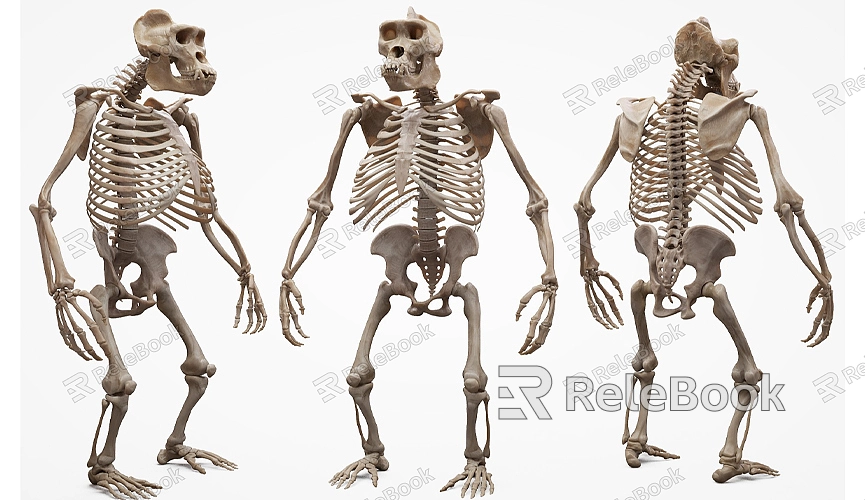How to Make Low Poly 3D Models in Blender
The low poly style is popular for its simplicity and artistic appeal, especially in game development and virtual reality. Creating low poly 3D models can not only improve rendering efficiency but also offer a unique visual style. If you’re interested in learning how to create low poly 3D models in Blender, this guide will provide you with detailed steps and practical tips.
Introduction to Low Poly Models
Low poly models are 3D shapes created using a minimal number of polygons (faces, edges, and vertices). These models have a clean, geometric appearance, which makes them suitable for real-time rendering in games and other applications. Despite having fewer polygons, low poly models can be designed creatively to achieve visually appealing and captivating effects through smart design and texture application.
Installing and Setting Up Blender
Blender is a powerful open-source 3D modeling software that’s perfect for creating various types of 3D models, including low poly ones. If you haven’t installed Blender yet, you can download and install it for free from its official website.

Once installed, open Blender, where you’ll see a simple interface that includes a cube, a camera, and a light source. We’ll use the default cube as a starting point for creating our low poly model.
Creating a Low Poly Model
The first step in making a low poly model is to create a base shape. Blender offers various basic geometric forms, such as cubes, cylinders, and spheres. You can choose the shape that best suits your project.
1. Add a Base Shape:
- Open Blender, and in the 3D viewport, press "Shift + A" to bring up the Add menu.
- Select "Mesh" and choose a base shape, like "Cube" for simplicity.
2. Enter Edit Mode:
- Select the shape you just created and press the "Tab" key to enter Edit Mode. Here, you’ll see the vertices, edges, and faces of your model.
3. Simplify the Model:
- The key to low poly modeling is reducing the number of faces. You can simplify the model by deleting unnecessary faces or merging multiple faces into simpler shapes.
- Use the "Select" tool to pick the faces you want to modify, and press "Delete" to remove them. You can also use the "Merge" tool to combine vertices.
4. Adjust the Shape:
- Use the "Extrude" tool to extend faces, or the "Scale" tool to resize the model. These adjustments help you transform the base shape into the desired low poly model.
5. Optimize the Model:
- You can use the "Subdivision Surface" modifier to smooth the model’s surface, but in low poly modeling, this should be used sparingly to retain the model's simplistic look.
Adding Materials and Textures
While low poly models have a simple look, adding the right materials and textures can enhance their visual appeal. Blender supports various material and texture settings that you can apply to your low poly models.
1. Create a Material:
- In the "Materials" panel, click "New" to create a new material.
- Adjust the material’s color, glossiness, and other properties to achieve the desired effect.
2. Add Textures:
- In the "Textures" panel, click "New" to add a texture.
- You can choose from different types of textures, such as image textures or gradient textures. Applying textures to your model will make it look more detailed and interesting.
If you need high-quality 3D textures and HDRI environments for your models and virtual scenes, you can download them for free from [Relebook’s texture site](https://textures.relebook.com/). For beautifully crafted 3D models, check out [Relebook’s model site](https://3dmodels.relebook.com/), which offers a wide range of premium 3D resources.
Rendering and Exporting
After completing the modeling and material setup, the final step is rendering, which converts your 3D model into a 2D image to showcase the final result.
1. Set Up the Camera:
- In the 3D viewport, adjust the camera's position and angle to make sure your model is fully visible during the render.
2. Set Up the Lighting:
- Adjust the position and intensity of the lights to achieve the best illumination. You can experiment with different types of lights, such as point lights or directional lights.
3. Choose a Render Engine:
- Blender offers several render engines, such as Eevee and Cycles. Eevee is suitable for real-time previews, while Cycles provides more realistic lighting and shadows. Choose the engine that fits your needs.
4. Start the Render:
- In the "Render" panel, click the "Render" button, and Blender will begin rendering your model. Once rendering is complete, you can save the image in formats such as PNG or JPEG.
Conclusion
Creating low poly 3D models not only boosts rendering efficiency but also brings a distinctive visual style to your projects. From choosing the base shape and simplifying the model to adding materials and textures, every step requires careful attention and experimentation. With practice, you’ll be able to create various interesting low poly models in Blender.
For high-quality textures and HDRI environments, you can download them from [Relebook’s texture site](https://textures.relebook.com/). And for stunning 3D models, visit [Relebook’s model site](https://3dmodels.relebook.com/), where you’ll find a wide array of premium resources.

